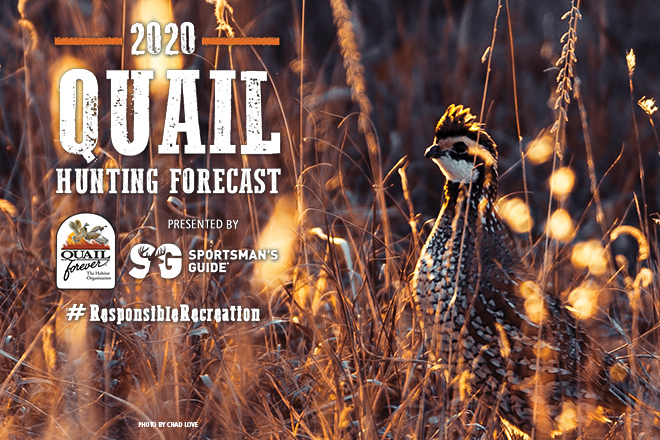 By Oliver Hartner
Editor's Note: If you’re reading this forecast, that means you have a passion for quail. Turn that passion into support by joining, renewing, or upgrading your membership Quail Forever. We are in the business of making habitat for the birds you love. Since its inception in 2005, QF has impacted over 1 million acres of habitat through its chapter volunteers, staff and partnerships. We ARE making a difference, and with your help, we can ensure our children will know the thrill of a staunch dog and a rising covey. Give back to the birds that give us all so much and show your support. Join, renew or extend your membership, and for a limited time get an awesome QF hoodie as our special gift to you!
By Oliver Hartner
Editor's Note: If you’re reading this forecast, that means you have a passion for quail. Turn that passion into support by joining, renewing, or upgrading your membership Quail Forever. We are in the business of making habitat for the birds you love. Since its inception in 2005, QF has impacted over 1 million acres of habitat through its chapter volunteers, staff and partnerships. We ARE making a difference, and with your help, we can ensure our children will know the thrill of a staunch dog and a rising covey. Give back to the birds that give us all so much and show your support. Join, renew or extend your membership, and for a limited time get an awesome QF hoodie as our special gift to you!
Overall habitat in Tennessee has not been conducive to a broad population of bobwhite quail for quite some time. However, for those places where habitat is being managed intensely, the quail population looks stable, and wild coveys can be found for those willing to put in some leg work.
WEATHER AND CONDITIONS
A mild winter across the state likely supported winter survival rates. Roger D. Applegate, Certified Wildlife Biologist for the Tennessee Wildlife Resource agency, reports, “There was virtually no snow in areas that have bobwhites and little ice.”
However, a wet spring and summer might’ve had an impact on nests and brood survival rates. Applegate says, “Having a wetter spring and summer can be problematic for quail nesting because nests could easily be flooded out and also damp conditions are tough on young chicks.”
HABITAT, BROODS AND COUNTS
As in many areas of the southeast, habitat loss has created problems for Tennessee’s bobwhite quail population. The heavy rains this year may have compounded the problem of habitat management as Applegate explains, “Many areas where habitat is not being managed is too dense, and due to all of the rain we have had, burning has been very challenging to complete on some areas.”
Despite the adverse weather conditions during the spring and summer and extensive loss of habitat, Applegate believes, “Anecdotally I can say that populations are stable-in-trend, and we look at trends and not year-to-year counts because those might give us the wrong impressions.” He also adds that limited data collection on the few sites they survey has not been analyzed yet, and he doesn’t expect a completed analysis until the end of October.
Applegate and other biologists don’t typically conduct brood surveys for quail due to the dense vegetation along Tennessee roads.
TOP SPOTS
For those wanting to quail hunt public land in Tennessee, Applegate says, “Some of the best quail hunting right now in Tennessee can be found on the wildlife areas in the middle section of the state. Our website
tn.gov/twra has excellent sources on Wildlife Management Areas (WMAs) by region, and our hunt guide provides details on what can be hunted on those areas. There’s also a contact at the site that you can talk with to get local info.”
INSIDER TIP
Applegate suggests inquiring with local WMA managers for suggestions on where to find birds on their areas, and to do a lot of planning and scouting. “If you aren't already doing this, you are going to have a hard time in November,” he says.